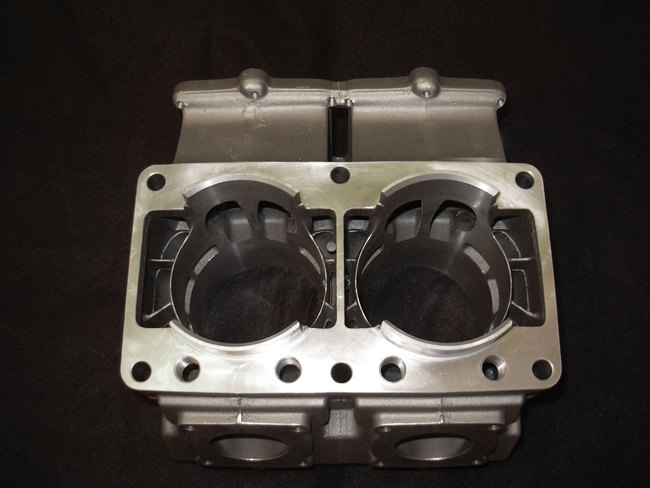Peewee's cylinder is a HUGE over bored DM from CPI to fit on a Banshee bottom end.Its only real use is for open class drag racing where in Merican terms " bigger is better "
and the cubes overcome all the technical flaws.
My experience with these things is limited to the smaller Cheetah that can have a powervalve fitted.
Its intake is a CR250 that is offset outwards from center line 6mm per side.That reed is way too big for anything less than 120 Hp on petrol so I have fitted a smaller CR125 back on bore center and
picked up a minimum of 4 Hp in a 100Hp setup.
The DM has several good points about it , but would be better with a smaller bore to get somewhere near equal transfer duct areas , and some shape to the inner walls.
it also has replaceable Ex duct outlets , so making them longer and better shaped would be an easy CNC project.
Ive got a thing thats unique and new.To prove it I'll have the last laugh on you.Cause instead of one head I got two.And you know two heads are better than one.







 Reply With Quote
Reply With Quote







 .
.

Bookmarks